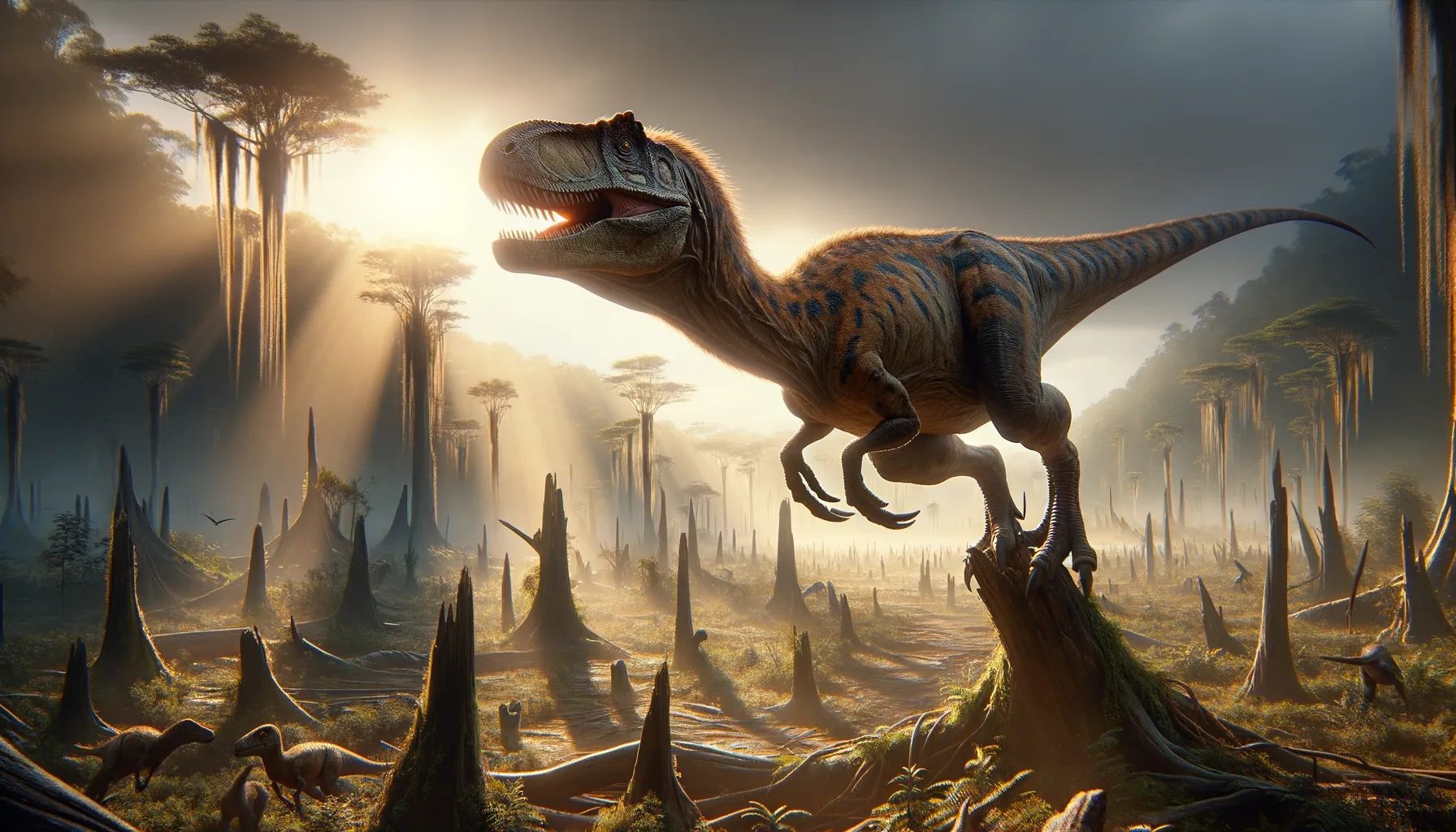
Aoniraptor
Swift predator of the ancient Cretaceous lands.
Period
Cretaceous
Length
Measured about 5 meters in length.
Height
Stood approximately 2 meters tall.
Weight
Estimated to weigh around 200 kilograms.
Aoniraptor was a theropod dinosaur that roamed South America during the Late Cretaceous period. Known for its slender build and likely agile nature, Aoniraptor was part of the carnivorous group of dinosaurs. It is primarily known from partial skeletal remains, which provide clues about its lifestyle and adaptations. This dinosaur is an important piece in the puzzle of understanding theropod evolution in the Southern Hemisphere.
Diet
Aoniraptor was a carnivore, feeding primarily on smaller dinosaurs and possibly scavenging on carcasses. Its diet would have included a variety of prey available within its environment, making it a versatile hunter.
Hunting
It likely relied on its agility and speed to ambush or chase down prey, using its sharp teeth and claws to capture them. Hunting may have involved solitary tactics, allowing it to surprise its targets effectively.
Environmental challenges
Living in a dynamic environment, Aoniraptor faced challenges such as changes in climate and habitat. These fluctuations required adaptability to survive temperature variations and possibly frequent environmental shifts, such as volcanic activity or sea level changes. Additionally, competition with other carnivorous species would have been a constant pressure necessitating strategic hunting and survival tactics.
Speed
This dinosaur was relatively fast for its size.
Lifespan
It likely lived up to 20 years or more.
First discovery
First discovered in Argentina in 2018.
Fun Facts
- Aoniraptor is a theropod dinosaur that lived during the Late Cretaceous period.
- Its fossils were discovered in Argentina, a country known for its rich dinosaur history.
- The name Aoniraptor means 'southern thief,' reflecting its predatory nature and location of discovery.
- Aoniraptor was likely a carnivore, using its sharp teeth to hunt smaller animals.
- Despite its fearsome name, Aoniraptor was not particularly large, compared to other theropods.
- Its close relatives include other theropod dinosaurs like the raptors.
- The discovery of Aoniraptor has helped scientists understand more about dinosaur diversity in South America.
Growth and Development
Aoniraptor's growth was likely rapid during its juvenile stages, reaching near-adult size relatively quickly to evade predation. As it grew, physiological adaptations would have enhanced its hunting efficiency and survivability. Furthermore, fossil evidence suggests theropods experienced different growth rates based on available resources and environmental conditions.
Habitat
This theropod lived in what is now Argentina, a region that was rich in diverse ecological niches. The environment was likely a mix of forests, riverbeds, and open plains, offering various hunting and scavenging opportunities. These varied landscapes also dictated the seasonal availability of water and prey, influencing its migratory and foraging behaviors.
Interaction with other species
Aoniraptor shared its habitat with various other dinosaur species, including herbivores and fellow carnivores. These interactions were crucial as they influenced its competitive strategies and survival tactics. While some species would have been prey, others could have posed a threat, leading to a complex web of predator-prey relationships.
Natural lifespan
Aoniraptor's natural lifespan was possibly over 20 years, similar to other theropods of its size.
Reproduction
Like other theropods, Aoniraptor was oviparous, laying eggs in nests it likely constructed or found. Parental care might have been minimum, with young hatchlings expected to be relatively precocial, able to fend for themselves quickly after birth.
Social behaviour
This dinosaur may have been mostly solitary, focusing on hunting and territorial behaviors. However, it is possible that it participated in some form of social interaction, possibly during mating seasons or when young offspring required protection. Evidence of pack behavior is not definitive but could have been present occasionally.
Fossil locations
Aoniraptor fossils have been primarily found in the Neuquén Province of Argentina, a region rich with Late Cretaceous dinosaur remains. Further discoveries in South America could reveal more about its range and adaptations, enhancing our understanding of its ecosystem.
